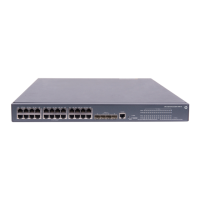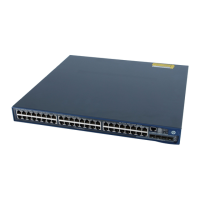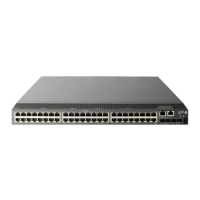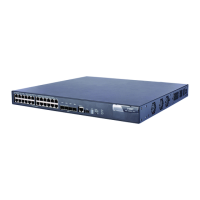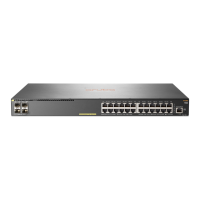133
To do... Use the command... Remarks
Associate the current interface
with the VPN instance
ip binding vpn-instance vpn-
instance-name
Required
No VPN instance is associated
with an interface by default.
Enable PIM-SM
pim sm
Required
Disabled by default
CAUTION:
ll the interfaces in the same VPN instance on the same router must work in the same PIM mode.
NOTE:
• For more information about the ip vpn-instance, route-distinguisher, and ip binding vpn-instance
commands, see the
MPLS Command Reference
.
• For more information about the multicast routing-enable command, see the
IP Multicast Command
Reference
.
Configuring an RP
An RP can be manually configured or dynamically elected through the BSR mechanism. For a large PIM
network, static RP configuration is a tedious job. Generally, static RP configuration is just a backup
method for the dynamic RP election mechanism to enhance the robustness and operational
manageability of a multicast network.
CAUTION:
In a PIM network, if both PIM-SM and BIDIR-PIM are enabled, do not configure the same RP to serve
PIM-SM and BIDIR-PIM simultaneously to avoid PIM routing table errors.
Configuring a static RP
If only one dynamic RP exists in a network, configuring a static RP can avoid communication interruption
due to single-point failures. It can also avoid frequent message exchange between C-RPs and the BSR.
Perform the following configuration on all the routers in the PIM-SM domain.
Follow these steps to configure a static RP:
To do… Use the command… Remarks
Enter system view
system-view —
Enter public network PIM view or
VPN instance PIM view
pim [ vpn-instance vpn-instance-name
]
—
Configure a static RP for PIM-SM
static-rp rp-address [ acl-number ] [
preferred ]
Required
No static RP by default
CAUTION:
To enable a static RP to work normally, you must perform this configuration on all the routers in the
PIM-SM domain and specify the same RP address.
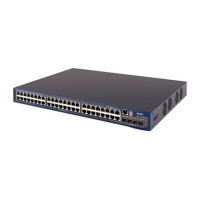
